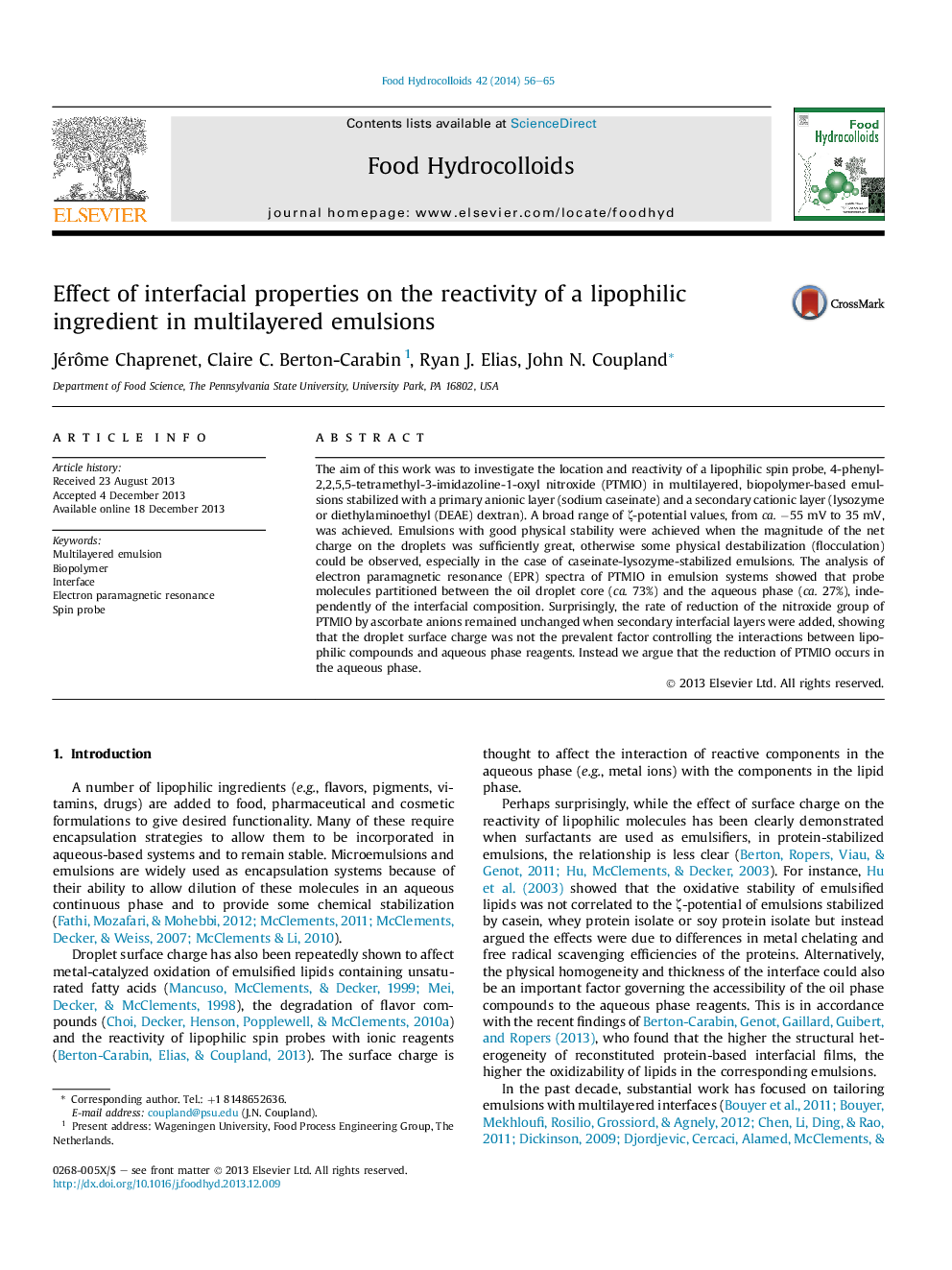| کد مقاله | کد نشریه | سال انتشار | مقاله انگلیسی | نسخه تمام متن |
|---|---|---|---|---|
| 604841 | 880325 | 2014 | 10 صفحه PDF | دانلود رایگان |

The aim of this work was to investigate the location and reactivity of a lipophilic spin probe, 4-phenyl-2,2,5,5-tetramethyl-3-imidazoline-1-oxyl nitroxide (PTMIO) in multilayered, biopolymer-based emulsions stabilized with a primary anionic layer (sodium caseinate) and a secondary cationic layer (lysozyme or diethylaminoethyl (DEAE) dextran). A broad range of ζ-potential values, from ca. −55 mV to 35 mV, was achieved. Emulsions with good physical stability were achieved when the magnitude of the net charge on the droplets was sufficiently great, otherwise some physical destabilization (flocculation) could be observed, especially in the case of caseinate-lysozyme-stabilized emulsions. The analysis of electron paramagnetic resonance (EPR) spectra of PTMIO in emulsion systems showed that probe molecules partitioned between the oil droplet core (ca. 73%) and the aqueous phase (ca. 27%), independently of the interfacial composition. Surprisingly, the rate of reduction of the nitroxide group of PTMIO by ascorbate anions remained unchanged when secondary interfacial layers were added, showing that the droplet surface charge was not the prevalent factor controlling the interactions between lipophilic compounds and aqueous phase reagents. Instead we argue that the reduction of PTMIO occurs in the aqueous phase.
Figure optionsDownload as PowerPoint slide
Journal: Food Hydrocolloids - Volume 42, Part 1, 15 December 2014, Pages 56–65